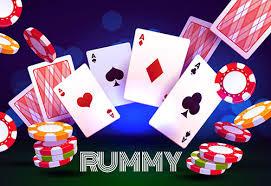Real Rummy Games, Rummy, a classic card game with a rich history, continues to captivate players around the globe with its blend of strategy, skill, and social interaction. While digital platforms have revolutionized how we play, the essence of real rummy games—played in person with physical cards—remains a cherished experience for many enthusiasts. In this article, we explore the world of real rummy games, delving into their unique appeal, the different variations, and why they continue to be a favorite pastime for card game aficionados.
1. The Timeless Appeal of Real Rummy
Overview: Playing rummy with real cards offers an immersive and tactile experience that digital versions can’t fully replicate. The physical interaction with cards, the atmosphere of face-to-face play, and the social dynamics involved contribute to the enduring popularity of real rummy games.
Key Aspects:
- Tactile Experience: Handling real cards and chips adds a tangible dimension to the game that digital interfaces can’t match.
- Social Interaction: In-person games foster direct communication, enabling players to read each other’s body language and engage in lively conversation.
- Tradition and Ritual: Many players appreciate the traditional aspects of card games, including the rituals and customs associated with dealing cards and managing game play.
2. Popular Variants of Real Rummy
Overview: Real rummy games come in several variations, each with its own set of rules and strategies. Understanding these variants can enhance your appreciation of the game and offer new challenges.
Variants:
- Indian Rummy (13-Card Rummy): A popular variant in India, played with two decks of cards plus jokers. The objective is to form valid sets and sequences, with the winner being the first to declare with a complete hand.
- Gin Rummy: A two-player variant that involves forming sets and runs. The game focuses on reducing the deadwood points, with the player having the lowest deadwood points winning.
- Kalooki (Kaluki): Played with two decks plus jokers, this version involves creating valid melds to reduce points. The game is known for its strategic depth and variations in rules.
- Canasta: A rummy variant that uses two decks of cards and involves forming melds of seven cards of the same rank. Canasta is known for its complex scoring system and strategic elements.
- Oklahoma Rummy: A version with a similar objective to Gin Rummy but with a twist where the first card dealt determines the wild card for that round.
3. The Dynamics of Playing Real Rummy
Overview: Playing real rummy involves various dynamics that contribute to its appeal. From the strategic planning to the social interactions, every aspect of the game adds depth and enjoyment.
Game Dynamics:
- Strategic Depth: Real rummy requires careful planning and strategy. Players must decide which cards to keep, which to discard, and how to best use jokers to complete their hands.
- Skill and Luck: Success in rummy involves a combination of skill and luck. While strategy plays a crucial role, the random nature of card draws introduces an element of chance.
- Reading Opponents: In-person play allows players to observe their opponents’ behavior, providing clues about their strategies and hands.
4. The Social Aspect of Real Rummy Games
Overview: One of the most significant advantages of real rummy games is the social interaction they facilitate. Whether played with family, friends, or in organized groups, the social component enhances the overall experience.
Social Benefits:
- Bonding Opportunities: Playing rummy with loved ones can strengthen relationships and create lasting memories.
- Community Building: Joining rummy clubs or participating in local tournaments fosters a sense of community and provides opportunities for social engagement.
- In-Person Interaction: Face-to-face interaction during gameplay allows for genuine communication and connection, enriching the overall experience.
5. Organizing Real Rummy Games
Overview: Organizing a real rummy game involves some planning to ensure a smooth and enjoyable experience for all participants. Here are some tips for hosting a successful game.
Tips:
- Gathering Supplies: Ensure you have enough decks of cards, chips, and score sheets for the number of players.
- Setting Up the Space: Arrange a comfortable and spacious area for players to sit and play. Ensure good lighting and minimal distractions.
- Explaining Rules: Clearly explain the rules and variations being used before starting the game, especially if there are new players.
- Encouraging Sportsmanship: Foster a positive and friendly atmosphere by encouraging good sportsmanship and respectful interaction among players.
6. The Future of Real Rummy
Overview: While digital rummy games continue to grow in popularity, the charm of real rummy remains strong. The future may see a blend of digital and physical elements, with innovations that enhance both experiences.
Future Trends:
- Hybrid Games: Integration of digital tools with traditional gameplay, such as digital scorekeeping or virtual card shuffling, could enhance the real rummy experience.
- Enhanced Community Engagement: Increased focus on community events and local tournaments to maintain the social aspect of real rummy.
- Technological Integration: Use of technology to improve the organization and management of real rummy games, making them more accessible and engaging.
Conclusion
Real rummy games offer a unique and enduring experience that combines strategic depth, social interaction, and tactile enjoyment. Whether you’re gathering with friends and family or participating in local tournaments, the appeal of playing rummy with real cards continues to resonate. As the game evolves and adapts to new trends, its core elements—strategy, skill, and connection—will remain at the heart of this classic card game.




